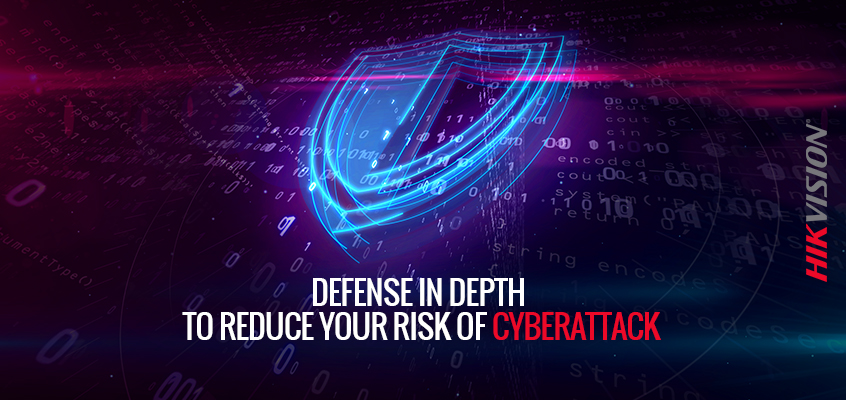Hikvision VP of Global Information Security on Applying Defense in Depth to Reduce Your Risk of Cyberattack

Hikvision’s VP of Global Information Security, Chuck Davis, covers defense in depth in today’s blog. The practice of "defense in depth" is an approach to manage risk using diverse defensive strategies, based on the idea that multiple layers of defense will provide additional protection against a potential cyberattack.
One of the most effective defenses is network segmentation, which simply stated means splitting a network into separate and isolated networks so if a system on one network is compromised, it can’t get to systems on the other networks to compromise them. For example, if a computer in a small business was infected with ransomware, the ransomware would attempt to infect other systems on the same network. If all the systems were on a flat network, the ransomware would likely spread quickly across systems that manage HR, Finance, Operations and Security. However, if the systems were on their own respective network segments, the ransomware wouldn’t be able to reach the other systems to infect them. Network segmentation is often the first line of defense against cyberattack.
“Network segmentation mitigates the risk of flat networks by isolating devices on separate networks. It also conserves bandwidth consumption, secures systems that contain sensitive data, and separates systems from people and other systems that do not need to interact. For a typical home network, segmentation can be achieved with two or three more routers, or, if you are a bit more advanced in your technical knowledge, using a switch with Virtual Local Area Network (VLAN) capabilities,” said Davis, in a SecurityInfoWatch.com article.
Corporate networks are built with network segmentation to leverage the principle of “least privilege,” meaning only giving people and systems access to the resources that they need, and nothing more. This is effective for the obvious reason of keeping sensitive resources only accessible by those who need access, but it is also an effective means of compartmentalizing a network environment in case of cyberattack or malware infection.
Davis added that understanding how you’re securing your environment such as the use of VPN access, complex passwords, multi-factor authentication, and installing patches in a timely manner also effect the robustness of your cybersecurity measures. By implementing defense in depth and network segmentation, while being mindful of these additional measures, you will be less susceptible to cyberattacks.
Stay posted on our blog as soon we’ll discuss measures that Hikvision takes to protect against cyberattacks.
